Excerpts from Jim Conrad's
Naturalist Newsletter
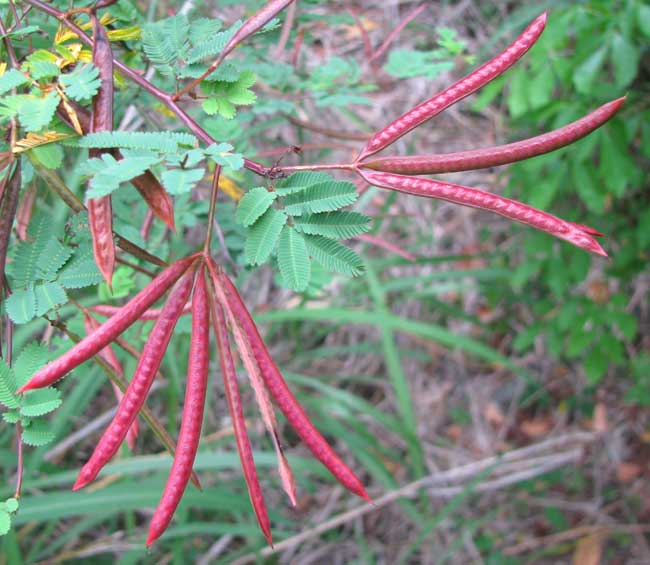
from the April 3, 2011 Newsletter issued from Hacienda Chichen Resort beside Chichén Itzá Ruins, central Yucatán, MÉXICO; limestone bedrock, elevation ~39m (~128ft), ~N20.676°, ~W88.569°
EYE-CATCHING DESMANTHUS FRUITS
If you take an acacia or mimosa tree, remove its prickles and make it herbaceous instead of woody, you'll have a Desmanthus. Our local Desmanthus, the shoulder-tall DESMANTHUS VIRGATUS, now is producing clusters of fruit-legumes that look like very slender, reddish fingers on very scrawny hands, as shown above.
Desmanthus's feathery, twice-compound leaves bear ant-attracting glands on their petioles, as shown below:
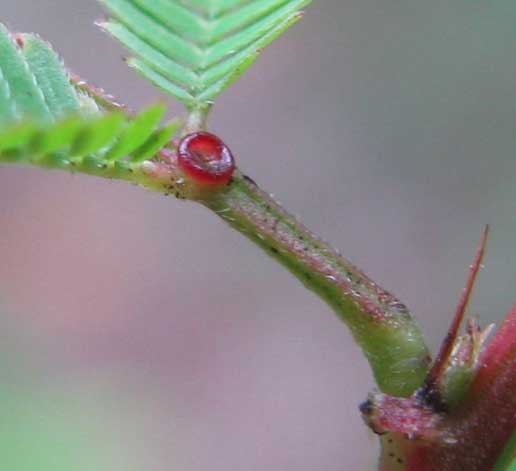
Desmanthus is another of those unpretentious little plants that when you first meet it you suspect of general mediocrity, but when you Google it, it turns out to be an international super-star. For, this waist-tall, herbaceous perennial shrub that's native from Texas and Florida south through nearly all of tropical America now is planted throughout the world's tropics as a valuable forage plant for grazing livestock.
Entire Desmanthus plants are palatable to grazing ruminants, and the leaves contain over 20% crude protein. Once an animal eats it back, it produces new sprouts so readily that it's regarded as one of the most tolerant of all forage legumes to heavy grazing. After a fire it readily regrows from its crown. Also, it thrives in a wide variety of soils and climatic conditions.
from the March 18, 2018 Newsletter issued from Rancho Regenesis near Ek Balam ruins in Yucatán, MÉXICO
ANOTHER FACE OF DESMANTHUS
This week as I waited for the Oriente bus to Valladolid I certainly didn't associate the vigorous plant described above with the wiry, ankle-high weed bearing clusters of dried-out, dark-brown legumes, and tangling itself with other scrappy-looking plants and garbage beside the road. The plant was so embedded in visual clutter that I picked a stem from it, held it against the sky, and took the picture at shown below:
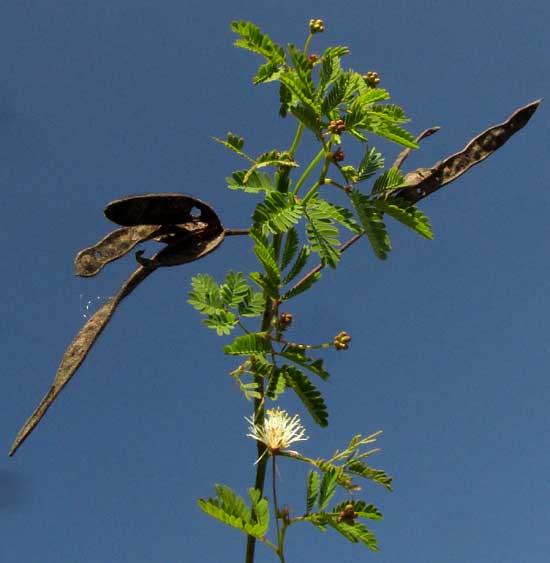
The manner in which the matured legumes spread like flat fingers atop a very slender wrist, and the acacia-like flowering cluster and twice-pinnate leaves, should have cued me to the fact that this was just another face of the very variable Desmanthus. However, I was so sure I'd never seen such a roadside weed that I thought I had something new. A closer look at those interesting legumes is shown below:
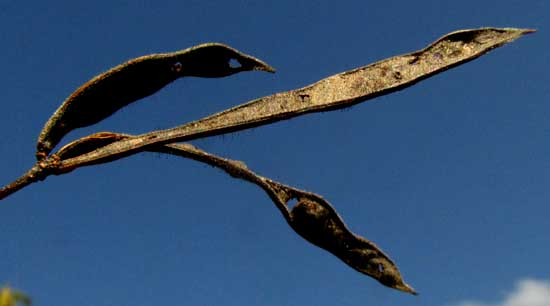
Leaves, with new flowers about to burst from their puds atop their peduncles, are shown below:
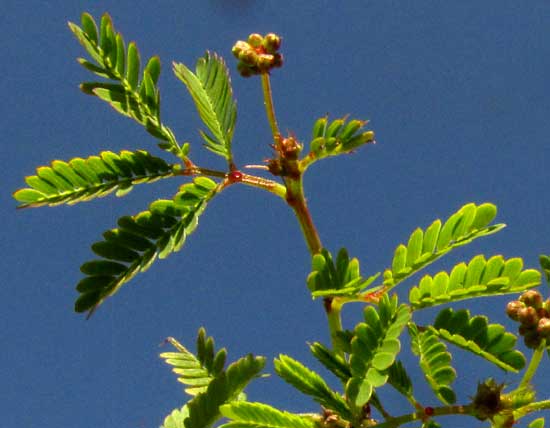
Individual flowers, each with ten stamens, form flowering heads with seven or so flowers, are shown below:
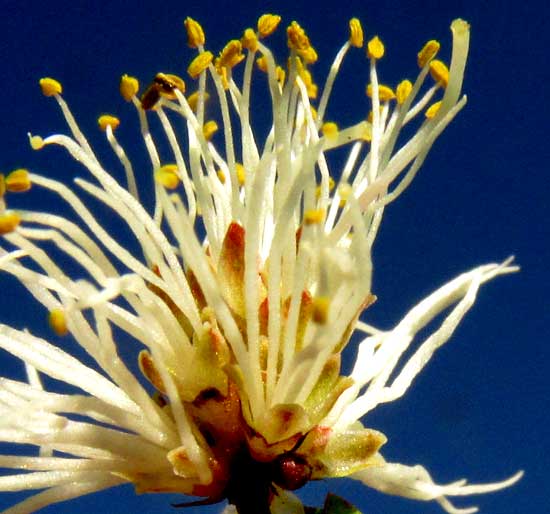
It's worth reviewing these details because they remind us that certain species can present radically different overall vegetative appearances, while retaining there's remarkable consistency in the size and shape of their sexual parts. The species' Wikipedia page claims that our wiry, ankle-high roadside weed can grow up to ten feet tall (3m), and produce up to 50 herbaceous stems from its single woody taproot. In some parts, the species is grown as forage for livestock.
The Desmanthus's taproot is important to its survival. When drought, frost, fire, animal grazing or roadcrew men with machetes destroy the herbaceous aboveground part, when conditions once again are favorable, the taproot simply produces new sprouts.